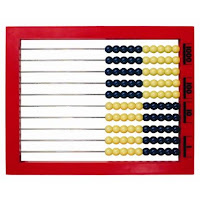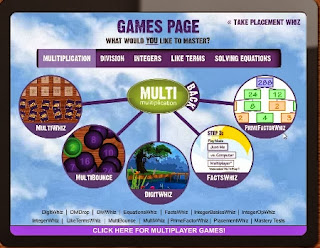
Maria's Math News, Vol. 76, October 2013
I love teaching, and I love math. This newsletter is my way of reaching out and helping you to teach it, too.
Hello again!
I feel this is an interesting newsletter, as we have a wide range of topics, from crocheting & geometry to research on timed tests and even some humor! Enjoy.
~Maria
 |
On-line, self-paced, multimedia math lessons. Our lessons are now at no cost. Pre-algebra, Algebra, and Geometry lessons that Go to www.teacher4-u.com/Online-Lessons.html to visit our website, see what we are about, and check out our lessons |
|---|
1. Math Mammoth news
2. Timed tests and how it damages students' learning of math (grades 1-12)
3. DigitWhiz math facts program (grades 3-8)
4. Crocheting and geometry (grades 5-12)
5. The most common math manipulatives for elementary school (grades 1-4)
6. Pie chart on the most common word problems in math... (everybody :)
1. Math Mammoth news
Math Mammoth has been nominated for the Practical Homeschooling Reader Awards. If you'd like to cast your votes for the best homeschooling products - hopefully including Math Mammoth - go here.They also include an incentive to fill out the ballot: one lucky voter will receive a free level of Rosetta Stone valued at $159. The ballot is here:
http://www.home-school.com/2014-reader-awards/
There will be a Math Mammoth giveaway in two weeks! Stay tuned!!
2. Timed tests and how it damages students' learning of math (grades 1-12)
See this entry as a web pageAgain, I want to share some thoughts from the How to Learn Math course by Jo Boaler I took recently -- this time about how timed tests and speed affect students in mathematics learning and their "ability" to make mistakes : ).
You see, all of our brains actually GROW and make new connections when we make mistakes and think about them. There is no brain growth if you can just sail through a problem set! That is why it is so important for our students to make mistakes -- and then we need to VALUE those mistakes and help them learn from them.
 People with so-called fixed mindset are usually afraid of making mistakes. We need our students (and ourselves!) to have a GROWTH mindset - the attitude that I'm not perfect nor smart already, but making mistakes helps me learn and grow my brain.
People with so-called fixed mindset are usually afraid of making mistakes. We need our students (and ourselves!) to have a GROWTH mindset - the attitude that I'm not perfect nor smart already, but making mistakes helps me learn and grow my brain.
Jo has written a book, What's Math Got to Do with It?: How Parents and Teachers Can Help Children Learn to Love Their Least Favorite Subject. I do not have it... but based on what I saw on Amazon and on her course I took, I expect it to be very helpful.
So, how does this tie in with testing and speed? In one session, Jo gave some reasons why she thinks students feel bad about making mistakes (and they do, don't they?).
- In schools (but it can happen in homeschool too), students get a VERY clear message that success is about "doing well on tests," which is very damaging.
The problem with this thinking is that students cannot then see the role MISTAKES play in learning, and how making mistakes can lead to SUCCESS — if you embrace them, value them, and learn from them.
Quoting from Alina Tugend:If students are afraid of mistakes, then they're afraid of trying something new, of being creative, of thinking in a different way. They're scared to raise their hands when they don't know the answer, and their response to a difficult problem is to ask the teacher rather than try different solutions that might - gasp be - wrong. They are, as one teacher told me, victims of excellence.
- The second reason had to do with the emphasis on SPEED in math classrooms. Neuroscience is showing us that mathematics should NOT be associated with speed. A number of studies in recent years show that TIMED TESTS cause math anxiety. I think that doesn't come as a surprise at all... Researchers have found that when people are stressed, that stress just blocks their working memory. This can simply prevent students from recalling math facts in tests though they know them.
 If you are wondering about automaticity... there are better methods of teaching a quick recall of math facts that ALSO give students conceptual understanding and help them develop number sense.
Jo said that number sense is so critical to young children that it is known to be what separates high achievers from low achievers in maths!
If you are wondering about automaticity... there are better methods of teaching a quick recall of math facts that ALSO give students conceptual understanding and help them develop number sense.
Jo said that number sense is so critical to young children that it is known to be what separates high achievers from low achievers in maths!
Check for example these videos of mine that explain the methods I have used with my children. I have gotten lots of good feedback from others as well:

Continue reading
|
3. DigitWhiz math facts program
My girls have been enjoying DigitWhiz for a few weeks now, and have been having fun with it. It is a free online program -- useful as a supplement -- that practices just a few areas:- multiplication facts,
- division facts,
- integer arithmetic,
- solving simple equations, and
- dealing with like terms.
Maybe they are planning to expand in the future; I don't know.
Kids earn points as they play, and they can use the points to buy various things in the DigitWhiz store. That always makes it more fun and motivating for children, as I'm sure you have noticed if you have used any of these types of online programs.
Below are some screenshots. Like I said, it's free, so won't cost you any to try and see if it works for your children/students or not.
See more screenshots or visit DigitWhiz.
4. Crocheting and geometry
See this entry as a web pageYou might ask, what do these two subjects have to do with each other?
Most people probably think that math and crocheting don't have anything in common (well, besides the fact you count your stitches and such). However, the video below shows you a STRIKING connection between crocheting and hyperbolic geometry which has ONLY been found fairly recently.
[screenshot]
I found it surprising that mathematicians had thought for years that it wouldn't be POSSIBLE to build a physical model for hyperbolic geometry. Then... the mathematician Daina Taimina found that CROCHETING was the perfect model for it!
The essence of the hyperbolic space can be implemented with knitting or crochet simply by increasing the number of stitches in each row. As you increase, the surface naturally begins to ruffle and crenellate.
Continue reading!
5. The most common math manipulatives for elementary school
Read this entry as a web pageHere is a list of various math manipulatives that I think are most useful to have for elementary grades, found at Amazon.
 Here are various math manipulatives that I think are most useful to have for elementary grades, found at Amazon:
Here are various math manipulatives that I think are most useful to have for elementary grades, found at Amazon:- A 100-bead abacus (it has 10 beads on 10 rows). The abaci with 5 and 5 alternating color beads are the best, but a traditional one with 10 beads of the same color will also work.
Browse Amazon's abacus collection
-
 Base ten blocks are useful for teaching the concept of place value, two-digit numbers, and three-digit numbers. Browse base ten blocks at Amazon.
Base ten blocks are useful for teaching the concept of place value, two-digit numbers, and three-digit numbers. Browse base ten blocks at Amazon.
- Another very useful manipulative is fraction tiles or fraction circles. You can make these yourself, of course, as well, from cardboard.
Other necessary manipulatives are various measuring tools, usually found at home:
- rulers,
- measuring tape,
- a bathroom scale,
- kitchen scale,
- a thermometer, and
- measuring cups.
6. Pie chart on the most common word problems in math...
Gave me a big laugh!!
Feel free to forward this issue to a friend/colleague! Subscribe here.
Till next time,
Maria Miller


